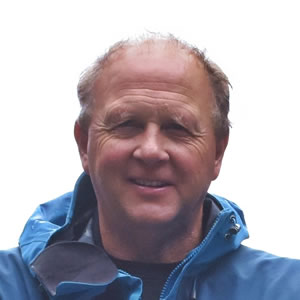Presented at NZ Hydrological Society Technical Workshop 17-20 March 2020
Abstract
The principles of flow measurement have remained the same for many years. Variations of the area/velocity method, dilution of a known tracer, or volumetric measurement have been the mainstay for Hydrologists. Improvements have come from new dilution techniques, simultaneous profiling of velocity by ADCPs, and sequential profiling by POEMs.
Dilution methods have the ability to measure small flows very accurately but are limited at higher flows. ADCPs are constrained in their ability to measure very small flows, but have the ability to measure deep water to a high level of accuracy as long as turbulence and/or high velocities don’t interfere with deployment. Traditional current meter methods can achieve good accuracy if time and care is taken, but again, limitations increase with velocity, as they do for the POEM. Most of these methods put expensive equipment at risk, expose operators to danger, and require good access.
A volumetric measurement is the ideal, but these are seldom possible unless you can direct a small flow to a container, or you are lucky to have flow leaving or entering a large reservoir of measured volume, with all other inputs and outputs known.
Measuring large fast flows, therefore, is problematic. Usually equipment can only be deployed at or near the surface of the water. Most techniques for surface velocity measurement are variations of Pooh Sticks where an object is timed over a known distance. Other methods include the optical strobe velocity meter, and more recently, surface velocity radars and image based measurement.
Traditionally, measurement of surface velocity suffered from three problems. The cross section needs to be known at the time of the measurement; some means of dropping floats is required, or there is a reliance on debris arriving at the right time and place; and the ratio of surface velocity to the average in the water column (alpha) needs to be measured or estimated. Alpha is influenced by bed conditions, depth, wind and other less obvious factors, with wind in particular having a large influence at slow water velocities. An extensive French study showed 90% of measured alpha values were within 10% of the default value, but no equivalent study has been carried out for NZ river conditions.
Recent work using video analysis to measure surface velocities is a great stride forward, and the additional step of using drones is a game changer. Suddenly it’s feasible to measure extreme flows quickly, safely and cheaply; and under ideal conditions, accurately. A drone can be flown to previously inaccessible areas. The method is almost instant, thus avoiding problems of water level changes and variable velocity across the width of the river. Video footage can be obtained remotely on a frequent basis for unruly ratings, although bed movement is usually the cause for this, and the critical dimension of area will remain unknown for subsequent calculations.
Video analysis is not just a method of flood measurement. With field calibration of alpha, known cross sections, and a lack of strong wind, measurements become more accurate, and as long as tracers or surface expressions are present or deployed, the method can be used across much of the flow range.
Video analysis of stream velocity is a great new advance for our industry. It only remains now for us to: a) support those people who are making the advances in methodology and software development, in particular ensuring software is developed to a commercial grade, and b) quickly embed good data collection procedures in place to ensure data collected now can be fully utilised in the future.
Author bio

Martin has enjoyed a fortunate Hydrographic career, benefiting from plenty of good mentors, opportunities, and an era of adequate funding. He has seen vast improvements to our industry such as the introduction of neoprene waders and waterproof paper. He is also lucky to have had the opportunity to work in a number of excellent locations. The best of these was Antarctica, where 5 months of enjoyment was only occasionally interrupted by hydrographic necessity, such as when the nearby Onyx River startled him into action when it entered a period of actual, but inconvenient flow.
He takes great satisfaction from his contribution to an extensive hydrological dataset, especially the flood gaugings carried out over many years, and is particularly enthusiastic about the possibilities that video analysis brings to our industry.
Presentation
To watch the video, you will need your AHA member password sent to members by email

